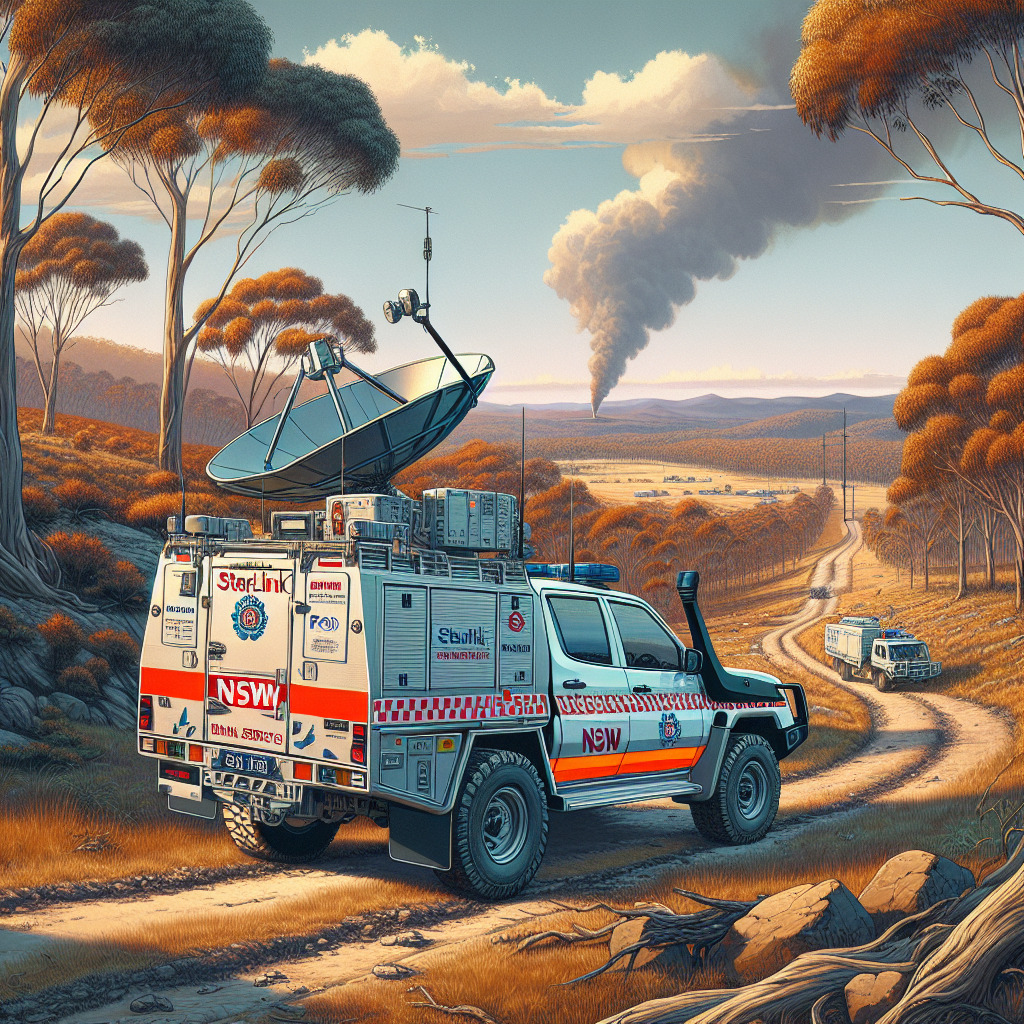Key Takeaways
NSW Government Equips 5000 Rural Fire Vehicles with Starlink
The New South Wales (NSW) government has announced a groundbreaking initiative to enhance its Rural Fire Services (RFS) fleet’s communication capabilities through Starlink technology. This ambitious project involves an investment of $69 million over the next three years and aims to equip over 5000 RFS vehicles with cutting-edge Starlink equipment and services.
Project Overview
The initiative is part of the vehicle-as-a-node (VaaN) project, which focuses on ensuring seamless and robust connectivity for operational RFS vehicles. This is particularly crucial in remote areas and during events where conventional communication infrastructure fails due to disasters. The NSW government’s substantial investment underlines the importance of reliable communication systems in emergency responses.
Timeline and Implementation
The installation of the Starlink equipment will start within this year. The extensive timeline ensures that over the coming three years, the integration process is thorough and systematic, leaving no vehicle unequipped.
Purpose and Objectives
The core purpose of this technology upgrade is to provide the RFS fleet with robust and resilient communication infrastructure. The VaaN project, leveraging low earth orbit satellite services and mesh/4G routers, ensures that RFS personnel can maintain constant communication. This is particularly important in challenging environments where traditional communication methods may falter.
Technological Advancements
The Starlink technology being implemented includes several advanced features:
- Low Earth Orbit Satellites: These satellites offer lower latency and higher reliability compared to traditional geostationary satellites
- Mesh/4G Routers: These routers ensure that RFS vehicles can connect seamlessly, providing internet connectivity that supports radios, mobile phones, and other handheld devices.
- Backup for Existing Systems: The technology serves as a reliable backup for existing communication infrastructure, which often fails during large-scale disasters.
- Live Streaming: It enables the live streaming of fire incidents to command centers, allowing for real-time situational awareness and more effective decision-making.
Impact on Rural Fire Services
This technological upgrade is set to revolutionize RFS operations, particularly in remote and rural areas. Communication blackspots, which have long posed significant challenges for firefighters, will be significantly reduced. The enhanced connectivity ensures that emergency response units can deliver critical support more efficiently and effectively to communities in need.
Quotes from Key Figures
RFS Commissioner Rob Rogers has voiced his support for the initiative, stating, “The implementation of this advanced technology will significantly enhance the network of brigades across the state, ensuring that communities receive the support they need during emergencies.”
Additional Context
The VaaN technology isn’t new to the region. Prior implementations have been carried out for the State Emergency Service (SES) and Fire and Rescue NSW, showcasing the effectiveness and reliability of this technology. Initial funding of $11.3 million was allocated in the 2023-24 state budget, with procurement processes beginning late last year.
The success of similar deployments serves as a promising precursor to the RFS fleet’s upgrade. Aligning with the overarching goal of enhancing emergency response capabilities, the integration of Starlink technology will bring a new era of connectivity and efficiency to the RFS.
Concluding Thoughts
In conclusion, the NSW government’s decision to equip 5000 RFS vehicles with Starlink technology marks a significant milestone in emergency response preparedness. By leveraging cutting-edge satellite communication services, the RFS will be better positioned to operate effectively in the most challenging environments. This initiative not only underscores the importance of technological innovation in public safety but also highlights the government’s commitment to protecting its communities.
Stay tuned to STLKSAT.com for more updates on the latest Starlink products and services, and how they are transforming various sectors worldwide.




